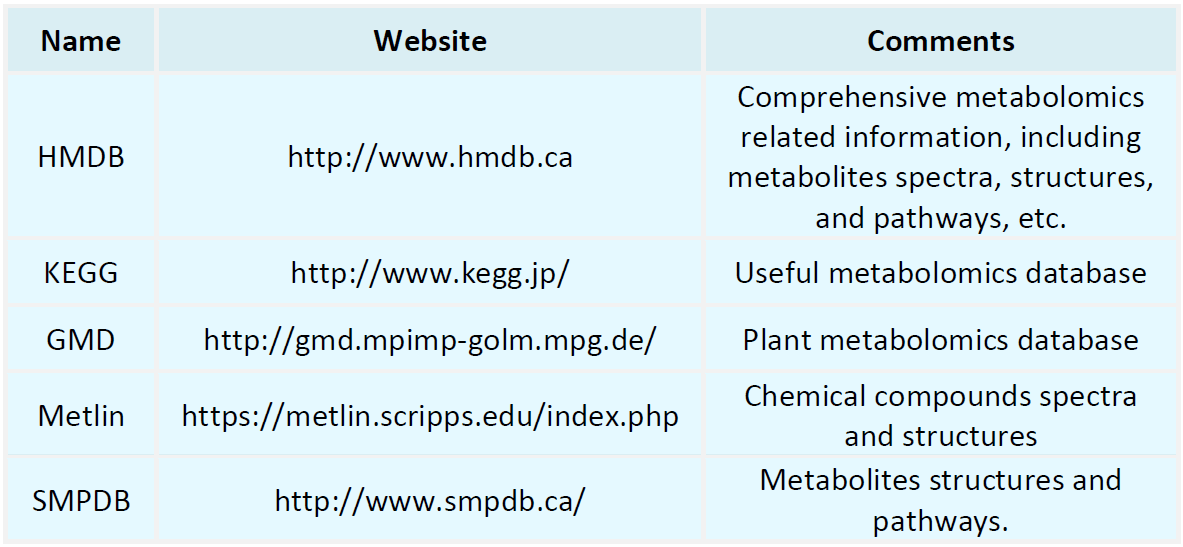Resources
Proteomics Databases

Metabolomics Databases

-
• Key Challenges in Membrane Proteomics and Corresponding Strategies for Resolution
Membrane proteomics represents one of the most technically demanding areas within proteomic research. It plays a pivotal role in drug target discovery, elucidation of signaling pathways, and the mechanistic study of diseases. However, due to the inherent physicochemical characteristics of membrane proteins and their complex intracellular distribution, membrane proteomics encounters multiple challenges at both the experimental design and data interpretation levels. Major Challenges in Membrane Proteo......
-
• Label-Free Shotgun Proteomics as a Strategy for Global Protein Quantification
Protein quantification is not only a foundational task in proteomics research but also a key step in elucidating the link between biological phenotypes and molecular mechanisms. With the ongoing advancements in mass spectrometry (MS), label-free shotgun proteomics has emerged as a widely adopted approach for high-throughput protein quantification, owing to its advantages such as the elimination of chemical labeling, simplified sample processing, and suitability for large-scale sample comparisons. Wha......
-
• A Comprehensive Overview of Tandem Mass Tag (TMT)-Based Quantitative Proteomics
Accurate quantification is fundamental to uncovering biological differences in proteomics research. As experimental designs involving multiple samples and time points become increasingly prevalent, traditional label-free approaches have demonstrated limitations in terms of consistency and throughput. Tandem Mass Tag (TMT)-based quantitative proteomics has emerged as a powerful alternative, offering high-throughput capabilities, low variability, and parallel sample analysis. These features make it an i......
-
• Optimized Strategies for Processing Membrane Proteins via FASP or In-Gel Digestion
Due to their intrinsic properties, high hydrophobicity, low solubility, and strong tendency to aggregate, membrane proteins have long posed technical challenges in proteomics. Efficient extraction, enzymatic digestion, and mass spectrometry (MS) analysis of membrane proteins depend heavily on the selection of appropriate sample preparation strategies. Among the commonly adopted digestion methods, Filter-Aided Sample Preparation (FASP) and in-gel digestion are applicable to membrane protein processing ......
-
• How to Choose the Right Enrichment Strategy for Acylated Peptides?
Protein acylation, an essential post-translational modification (PTM), plays crucial roles in cellular signal transduction, gene regulation, metabolic control, and other biological processes. Common acylation types, including acetylation, propionylation, and butyrylation, occur on both histone and non-histone proteins and are implicated in a wide range of physiological and pathological events such as tumorigenesis, inflammation, and metabolic disorders. However, acyl modifications often exist at low s......
-
• Analytical Considerations and Regulatory Requirements for Host Cell Proteins (HCPs)
Host cell proteins (HCPs) are non-product-related proteins derived from host expression systems, such as CHO, E. coli, and HEK293, during the production of recombinant proteins and biopharmaceuticals. These impurities are challenging to completely eliminate during manufacturing, purification, and storage. If residual HCPs remain in the final product, they may pose risks including immunogenic responses, allergic reactions, reduced product stability, and degradation of active pharmaceutical ingredients.......
-
• Common Pitfalls in Phosphoproteomics Experiments and Practical Solutions
Protein phosphorylation is one of the most pivotal post-translational modifications, playing essential roles in various biological processes, including cellular signal transduction, metabolic regulation, and cell cycle control. With the advancement of mass spectrometry (MS) technologies, phosphoproteomics has emerged as a powerful approach to investigate the dynamic regulatory mechanisms of signaling pathways. However, challenges such as the inherently low abundance and instability of phosphorylation ......
-
• Olink Proteomics: Blood/Serum Sample Handling Protocol
In the fields of disease biomarker discovery, immune response analysis, and mechanistic research, the quantitative accuracy and throughput requirements of Olink proteomics have been steadily increasing. While mass spectrometry offers significant advantages in terms of depth of analysis, it faces challenges in clinical translation, particularly when dealing with large sample volumes or rare sample types. In this context, the Olink® Target and Explore platforms have emerged as leading technologies in re......
-
• How to Conduct Co-IP Experiments Using Plant Tissues?
In plant biology, validating protein–protein interactions is essential for elucidating signaling pathways and functional mechanisms. Co-immunoprecipitation (Co-IP) is a classical method for detecting physical interactions between proteins. Although this technique is widely applied in mammalian systems, its implementation in plant tissues remains technically challenging due to factors such as rigid cell walls, low endogenous protein abundance, and interference from secondary metabolites. This article s......
-
• How to Avoid Heavy-Chain Contamination in Co-IP with Antibodies?
In studies of protein–protein interactions, co-immunoprecipitation (Co-IP) is a classic and widely used method for confirming and capturing protein–protein interactions present in vivo. Despite its straightforward principle, Co-IP is prone to practical technical issues, among which IgG heavy-chain contamination and light-chain interference in Western blotting (WB) is a particularly common and frustrating problem. When an IgG antibody is used for Co-IP and an anti-IgG secondary antibody is also used fo......
How to order?







